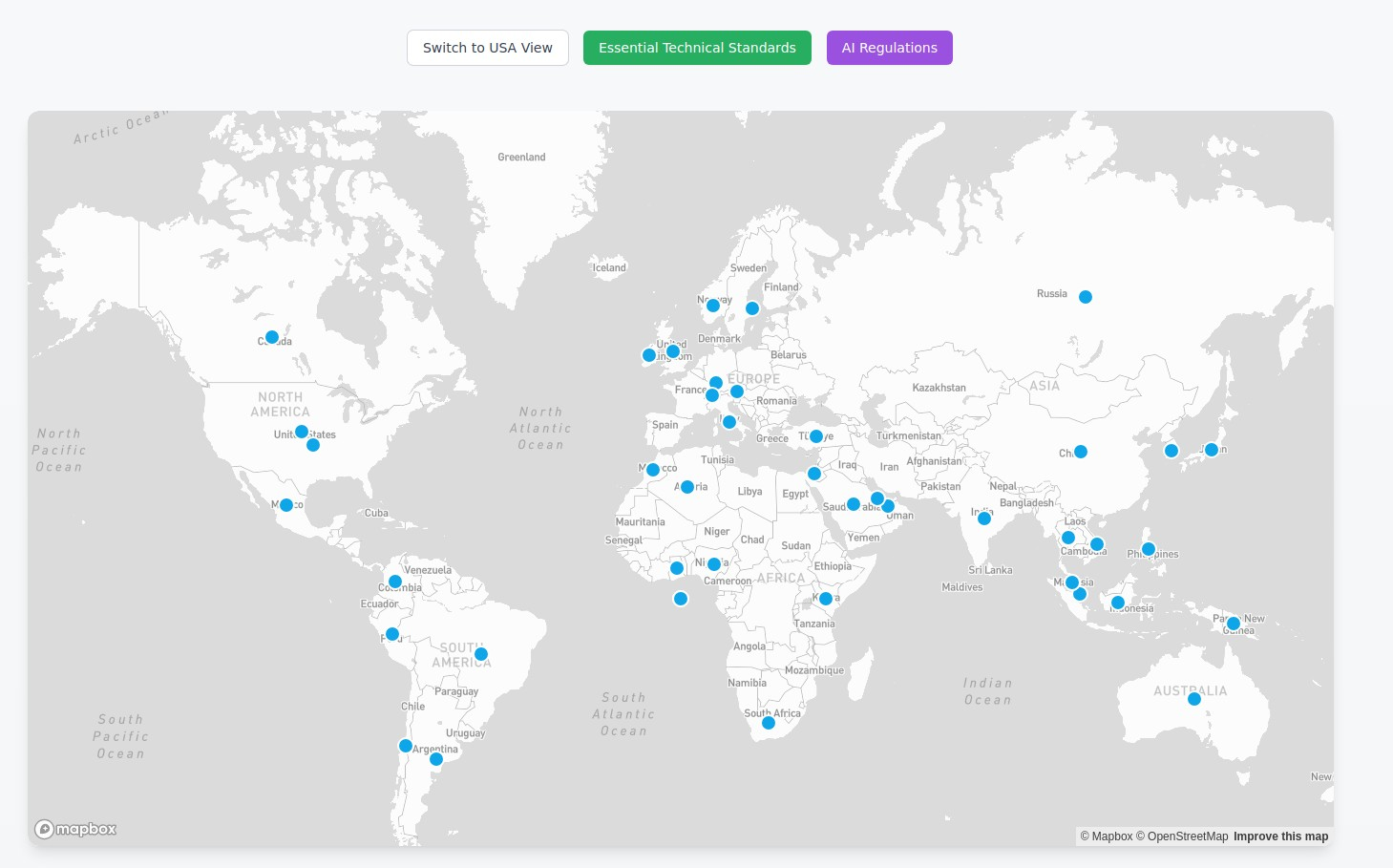Securing the Autonomous Frontier: A CISO's Guide to Agentic AI Applications

The rapid evolution of Generative AI, particularly the emergence of agentic AI applications, presents unprecedented opportunities for innovation, automation, and efficiency across enterprise operations. These advanced systems, powered by Large Language Models (LLMs), transcend simple conversational interfaces by actively interfacing with diverse external environments through tools and function calls, including API access, code execution, databases, web browsers, and even critical operational systems. However, this extended reach fundamentally introduces new and severe security surfaces that demand a proactive and comprehensive security strategy. As CISOs, understanding and mitigating these emergent risks is paramount to harnessing the power of agentic AI safely and effectively.
This guide, complementing the OWASP Agentic AI Threats and Mitigations (ASI T&M) document, aims to provide a strategic overview of the security considerations for designing, developing, deploying, and operating secure agentic applications, focusing on actionable technical recommendations for builders and defenders.
Understanding the Expanded Attack Surface of Agentic AI
Unlike traditional LLM applications primarily concerned with prompt injection and output integrity, agentic systems introduce complex interactions with real-world environments, vastly expanding their attack surface. Every interaction point becomes a potential vulnerability. The OWASP guide identifies several Key Components (KCs) of agentic architectures, each with associated threats:
- Large Language Models (LLMs) (KC1): The "brain" of the agent, responsible for reasoning and planning. Core threats include Cascading Hallucinations (T5), Intent Breaking (T6), Misaligned Behaviors (T7), and Human Manipulation (T15).
- Orchestration (Control Flow Mechanisms) (KC2): Dictates the agent's overall behavior and decision-making. Vulnerabilities here can lead to Intent Breaking (T6), Repudiation (T8) (making actions untraceable), Identity Spoofing (T9), Overwhelming Human-in-the-Loop (HITL) (T10), and the emergence of Rogue Agents (T13), especially in multi-agent systems.
- Reasoning / Planning Paradigm (KC3): How agents break down complex tasks into steps. Weaknesses can manifest as propagated hallucinations (T5), direct manipulation of goals (T6), and untraceable decisions (T8).
- Memory Modules (KC4): Enable agents to retain short-term and long-term information. These are susceptible to Memory Poisoning (T1), Privilege Compromise (T3) through context collapse (leading to unauthorized data access/leakage), and the amplification of hallucinations (T5). Different memory types (in-session, cross-agent, cross-session, cross-user) present varying levels of risk if compromised.
- Tool Integration Frameworks (KC5): Allow agents to use external tools like APIs, functions, or data stores. This is a core vulnerability area for Tool Misuse (T2), Privilege Compromise (T3) (tools often run with excessive privileges), and Unexpected Remote Code Execution (T11).
- Operational Environment (Agencies) (KC6): How agents interface with external systems (e.g., API Access, Code Execution, Database Execution, Web Use, Controlling PC Operations, Operating Critical Systems). These are high-risk areas, linked to Tool Misuse (T2), Privilege Compromise (T3), Resource Overload (T4), and Unexpected RCE (T11). For instance, "Extensive API Access" (KC6.1.2) or "Extensive Code Execution Capability" (KC6.2.2) can allow a compromised agent to generate unwanted API calls with excessive authorization or run arbitrary code. Unauthorized operations in critical systems (KC6.6) can lead to catastrophic failures.

Securing agentic systems requires a holistic approach where security is embedded within the architecture itself, rather than just securing individual components.
Strategic Security Principles: A Lifecycle Approach
Building secure agentic AI systems demands integrating security considerations throughout the entire development lifecycle – from design to operations. Security is not an afterthought; it is a foundational principle necessary regardless of the agent's architecture, complexity, or function.

1. Secure Design & Development Phase
Early decisions in this phase shape downstream control strategies and lay the foundation for resilient agentic systems.
- Comprehensive Threat Modeling: Go beyond traditional and LLM threat modeling. Define "safe failure" states, chart integration boundaries, specify memory access policies, and ensure human-in-the-loop safeguards where applicable.
- System Prompt Engineering & Hardening: Securely define the agent's core instructions, capabilities, and limitations to prevent manipulation. This includes establishing clear boundaries and safeguards (DOs and DON'Ts, forbidden topics), using clear delimiters for user input, instructing the model to be wary of instruction overrides, and employing deterministic controls to limit agent access only to expected actions, systems, and data sources.
- Secure Coding Practices: Implement standard secure coding principles adapted for AI agent development, focusing on robust input validation (including tool arguments, API responses, memory data), secure key management (avoiding hardcoding secrets), and enforcing least privilege for all components.
- Memory Security Design: Critical for preventing unauthorized access, tampering, and data leakage. Plan for access control (IAM roles, API keys, database permissions), encryption of data at rest and in transit, input validation for data stored in memory, and PII detection/redaction before storage. Consider human oversight for memory entries.
- Input/Output Validation & Sanitization: Implement strategies to ensure data integrity and safety. Apply AI Guardrails to both inputs and outputs to identify malicious prompts or content. Utilize schema enforcement (e.g., JSON schemas) for tool arguments and outputs to constrain unpredictable behavior. Implement output sanitization strategies to neutralize malicious content before rendering or passing to other systems.
- Authorization and Authentication: Authenticate and authorize agentic systems to perform actions on behalf of users or other systems. Identify permission boundaries for agents and their tools, use existing identity and authorization frameworks (like OAuth 2.0 with authorization code flow with PKCE), and assign decentralized identifiers (DIDs) to agents for verifiable identity. Grant only the minimum necessary permissions and regularly audit them.

2. Secure Build & Deployment Phase
Robust and adaptive development lifecycles are essential for productionizing agentic applications.
- Automated Security Testing (SAST & SCA): Integrate Static Analysis (SAST) tools to detect vulnerabilities in source code and Software Composition Analysis (SCA) to identify known vulnerabilities in third-party libraries.
- Environment Hardening & Sandboxing: Isolate the agent's execution environment to limit the impact of compromise. This is a mandatory control for code execution (KC6.2). Utilize OS-level containers (Docker, Podman), VMs, or WebAssembly, with strict filesystem and network restrictions. Run agent processes with minimal OS-level privileges.
- Secure Configuration Management: Use dedicated secrets management systems (e.g., AWS Secrets Manager, HashiCorp Vault) instead of hardcoding sensitive data, and implement credential rotation. Apply fine-grained API access controls and scan Infrastructure as Code (IaC) templates for misconfigurations.
- Runtime Security with Memory Isolation: Implement architectures that explicitly separate control flow generation from untrusted data processing (e.g., Google's CaMeL). This empowers security to enforce data flow through system design, preventing untrusted data from directly influencing agent actions or exfiltrating sensitive information via unauthorized tool parameters.
- Separating Data Planes from Control Planes: For multi-agent systems, differentiate between control messages and data messages. Control channels require stronger authentication, authorization, and integrity checks to prevent a compromised agent from issuing malicious commands or disrupting coordination.
- Just-in-Time (JIT) Access and Ephemeral Credentials: Agents accessing sensitive tools or data should operate under the principle of least privilege in time. Grant access permissions only when needed and for the shortest duration possible, using short-lived API tokens or temporary cloud credentials.
3. Secure Operations & Runtime Phase
Live agentic systems require continuous behavioral monitoring and a robust incident response plan.
- Continuous Monitoring & Anomaly Detection: Implement real-time detection of malicious activity, policy violations, and deviations from expected behavior. This includes monitoring LLM inputs/outputs for jailbreak techniques and policy violations, logging all tool calls and parameters (monitoring for unusual frequency or suspicious values), and observing code execution within sandboxes for forbidden actions. For multi-agent systems, monitor communication patterns for collusion or unexpected emergent behavior.
- Runtime Guardrails & Automated Moderation: Enforce policies and constraints dynamically. Deploy input/output guardrails to block or sanitize content based on predefined rules. Guardrail placement is critical: deploying them within the application and/or agent code space offers maximum potential detection effectiveness due to full visibility and context. Implement memory Time-to-Live (TTL) or expiration for sensitive data, and ensure memory sanitization and PII redaction before storage.
- Comprehensive Logging, Auditing & Traceability: Maintain detailed, structured logs of all agent actions, reasoning steps, generated plans, tool calls, HITL interactions, errors, and state changes. Logs are crucial for debugging, security analysis, and compliance. It is paramount to never log sensitive information directly, such as access tokens, authentication passwords, or PII. Implement immutable logs and strict access controls to log platforms.
- Incident Response Planning: Develop a predefined plan for handling security incidents specific to agentic AI, such as successful prompt injections causing harm, data breaches via agents, or unauthorized agent actions. Define clear steps for containment, analysis, remediation, and reporting, and assign clear roles and responsibilities. Build emergency off-switches to immediately revoke access privileges or stop agent operations.
- AI Bot Mitigation and Controls: Establish a tamper-proof Agent identity layer. This is crucial for trusted collaboration in the "Agentic Web" and for playing nicely with bot-mitigation solutions. Adopt a multi-factor identity bundle that includes:
- Stable network & User-Agent (UA) metadata: Serve from documented IP ranges and verbose User-Agent strings, including
X-AI-Agentheaders. - Cryptographic request signing: Sign every HTTP request to prevent forging or MITM attacks.
- Agent Name Service (ANS): Publish a standardized ANSName and register it in an open Agent Registry, backed by PKI. This unified, trust-rich handshake streamlines integrations, clarifies intent, and provides precise control over interactions.
- Stable network & User-Agent (UA) metadata: Serve from documented IP ranges and verbose User-Agent strings, including

Assurance Strategies: Red Teaming and Behavioral Testing
To truly assure the security of agentic applications, traditional testing must be augmented with more dynamic and behavioral approaches:
- Red Teaming Agentic Applications: Simulate adversarial attacks to identify vulnerabilities. Beyond prompt injection, red teaming should assess privilege escalation through tools, memory poisoning, and plan manipulation. Frameworks like AgentDojo, Agentic Radar, AgentFence, ASB, AgentPoison can aid in simulating these attacks. This proactive approach is vital for discovering potential attack vectors.
- Behavioral Testing for Agentic Applications: Evaluate agents based on their activities and interactions to uncover hidden problems like unexpected actions, logical errors, or the pursuit of harmful goals. This involves defining explicit objectives, using benchmark datasets (e.g., AgentBench, HELM, WebArena), executing simulations in controlled environments, and employing both human and automated assessments. It is crucial to select the right benchmark based on your specific security objectives (e.g., confidentiality, integrity, adversarial robustness, privacy protection) and identified threat landscape (e.g., data poisoning, model extraction, misuse of agent autonomy).
Conclusion
The deployment of agentic AI applications marks a significant leap in enterprise capabilities. However, their autonomous nature, extensive tool use, and interaction with various operational environments introduce a complex security landscape. For CISOs, a successful strategy hinges on a comprehensive, lifecycle-oriented approach that integrates security from the earliest design phases through to continuous operations. By emphasizing secure architecture patterns, rigorous development practices, robust runtime controls, and proactive assurance strategies like red teaming and behavioral testing, organizations can confidently navigate the complexities of agentic AI, ensuring that these powerful new systems deliver their transformative potential securely and responsibly. This journey requires continuous vigilance, adaptation to evolving threats, and strong collaboration between security, development, and operational teams.










